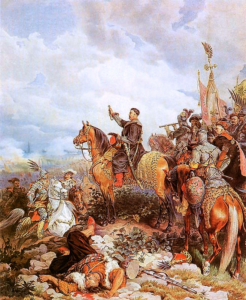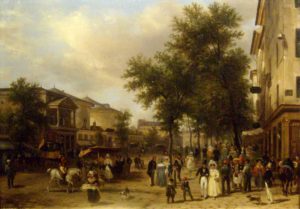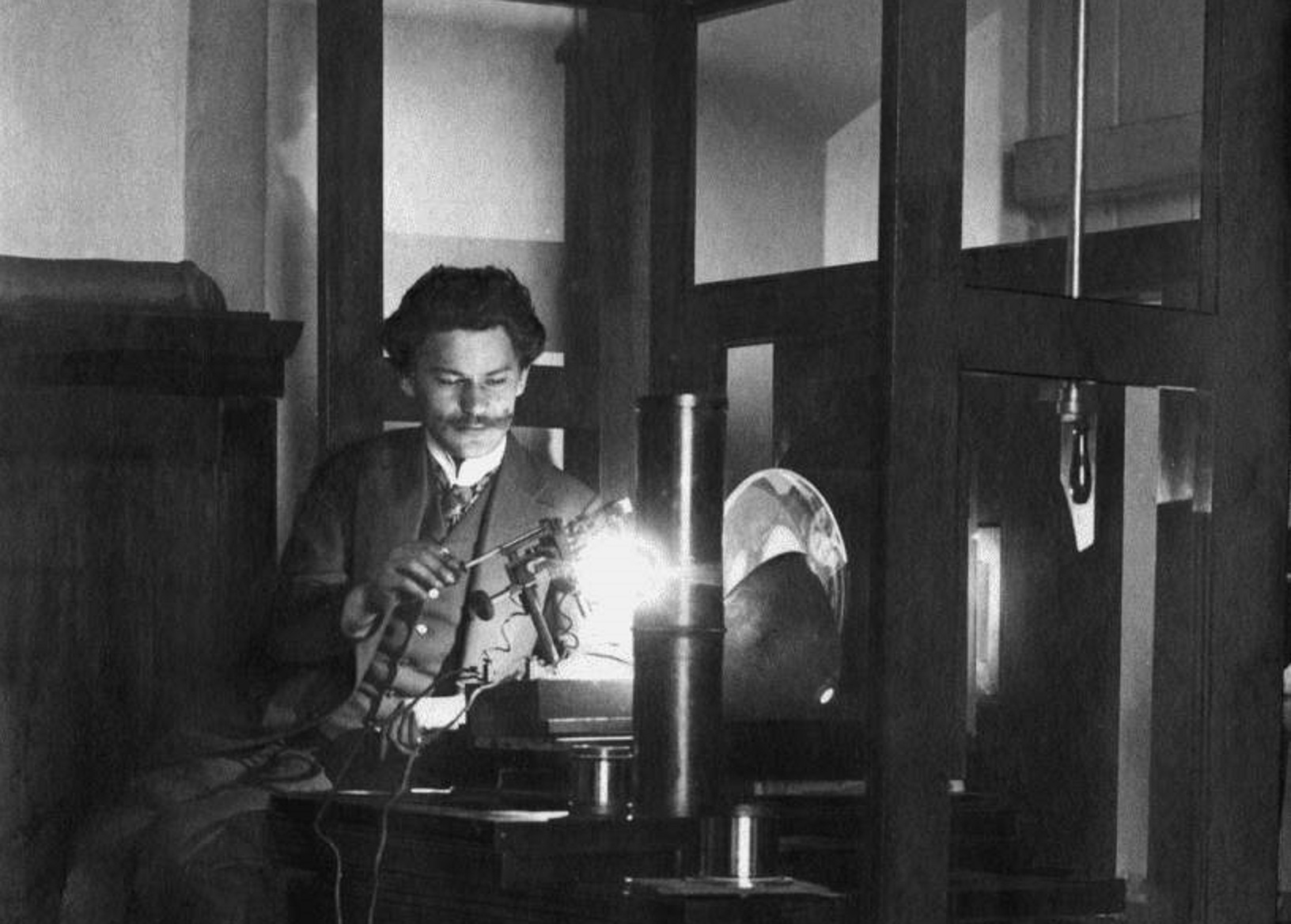Over the course of history, societies have experienced ongoing waves of epidemics and pandemics of infectious diseases. Poland has not been excluded in this. These bouts of sickness did not only impact history but also the development of medicine, the functioning of state institutions and the nation’s way of life.
by Michał Szukała
Throughout human history, epidemics and pandemics have fundamentally influenced societies. Sometimes it was the source of an empire’s economic downturn, at other times it was an opportunity to catch up with the civilization gap separating less and better developed societies. Diseases have also been an inspiration for cultural works. Even more importantly, however, epidemics were a tragedy for ordinary people who suffered consequences unimaginable for those living in the age of highly developed medicine and hygiene. Fighting epidemics and overcoming them can be considered some of the most important, and often underestimated, campaigns in history.
“A pestilential malignancy in the air” (J. Swift)
Our knowledge about the earliest epidemics of infectious diseases in Poland is relatively small. Undoubtedly, the 14th-century plague raging in Western Europe treated Poland and some other regions of Central Europe rather gently. The plague, however, proved to be a frequent visitor over the next three centuries. At the end of the 15th century in Kraków, epidemics of this disease occurred every two, three years, and even year after year. Between 1500–1750, 92 epidemics were recorded there – it was the most affected city in Poland. Between 1601–1650 there were 19 epidemic outbreaks in Kraków and 33 in Warsaw. The later infection rate in both cities remained at a similar level. We know about the 16th-century pestilence in the Polish-Lithuanian Commonwealth, among others, thanks to chronicles describing the emperors searching for places free from “a pestilential malignancy in the air”. The reason “His Majesty King Sigismund [III Vasa] left Krakow [was] because of the air […] [as it] was already malignant in Krakow. […] His Majesty the King directed himself to Sandomierz and there on the way death was already present, so next to Lublin and from Lublin to Warsaw. The royal court was astonished, there was death wherever they directed themselves to,” described a Kraków chronicler in 1588.

Escape from major cities and isolation in more distant, less populated places was rightly seen as a fairly effective recipe for recurring epidemics. Great or local plagues paralyzed the actions of already weak state institutions. The suspension of courts and tribunals is often mentioned in the archives. It was a unique situation when key events in the country were postponed, including funerals. Due to the plague prevailing in Krakow in 1599, the funeral of Queen Anna [the Austrian archduchess married to Sigismund III Vasa] was postponed.
The way in which the plague spread was not fully known, and attempts were made to predict its arrival. In 1591, Piotr Umiastowski, a doctor and philosopher educated in Bologna, published a catalogue of omens of the approaching epidemic in the book Nauka o morowym powietrzu na czwory księgi rozłożone (The study of the malignant air in four volumes). He mentioned, among others the appearance of a comet, a huge number of frogs and rapid weather changes. Another sign of approaching plague was certain when meat was exposed to the wind, rotted and a dog who drank the morning dew, died. These were logical conclusions based on the belief that the “malignant air” was causing the epidemic.
In modern times, epidemics often accompany wars. Chaos and the movement of the masses have definitely encouraged these two “horsemen of the apocalypse.” In modern times, during periods of strife, the number of those killed in battles was strikingly lower than those who died as a result of epidemics such as dysentery or typhus. The plague that was killing the army of Sweden and the Polish-Lithuanian Commonwealth was one of the main reasons for the ceasefire in 1629. Epidemics during the wars of the mid-17th century took a terrible toll. During the battle of Zhvanets, during the Khmelnytsky Insurrection in 1653, out of the 30,000 soldiers of the Polish army about 20,000 were lost. “In Warsaw, people die from stinks of corpses beaten up and not buried, and horses; also in Poznań the Swedes are dying, and our army has begun to die out too” – thus the plague was described in 1655-1656.

Epidemic also paralyzed the army of King John III Sobieski, ending the siege of Vienna by the Turks in 1683. “Nearly half of our army suffers from a disease which resembles a plague” – wrote King John III Sobieski in a letter to Queen Marie (Marie-Casimire de la Grange d’Arquien). The plague struck devastated Poland also in the 18th century. At the end of the 1760s, the plague became a pretext for Austria and Prussia to establish a sanitary cordon on the border with Poland. The border annexations made at that time became an introduction to the first partition in 1772.
Dramatic epidemics in the 17th and 18th centuries in Poland and other European countries also caused an increase in social unrest. More and more people were being accused of spreading disease on purpose, including gravediggers, barbers and quack doctors. People suspected they wanted to make money on fake medicines or organizing funerals. The Jewish community was also accused, as members of this community were supposedly less likely to contract epidemic diseases. On 7 March 1711, three gravediggers accused of spreading the plague were executed in Lublin. Under torture, they pleaded guilty and admitted their aim was profit: “We had smashed the corpse’s head, took the brain out and smeared the door of houses with it.” Epidemics of the 17th century also influenced the then Baroque fascination with death and the transience of human life.

The plague epidemics in Europe died out by the early 19th century. Up until then, the black death had taken a terrible toll. Reliable estimates of the number of dead in Prussia note about 300,000 victims in 1709–1713. In 1771, a plague in Moscow killed between 50,000 and 100,000. inhabitants, i.e. even 1/3 of the city’s population. The plague was to return to Europe in the next decades, but on an incomparably smaller scale. Cholera epidemics were to become the nightmare of the 19th century.
“Kholera”
At the beginning of the 1820s, in accounts of merchants traveling to India and Southeast Asia, there were descriptions of a disease whose symptoms included vomiting, diarrhea, weight loss and spots on the body. Arab sailors called it “kholera” which means “leakage of bile.” Its expansion began in the remotest regions of Asia, including in Japan, which remained closed to the world. In 1830, it reached Russia, and then the rest of Europe. The exotic disease was initially treated as a harmless curiosity from the farthest end of the world. German poet Heinrich Heine wrote about the first days of the infection: “Because it was in the middle of the Lent [the fourth Sunday of Lent], the sun was shining and the weather was lovely, the Parisians walked in crowds with the greater simplicity on the boulevards, where you could see masks parodying the colour of the disease and depressed face, mocked the fear of illness and the disease itself.”

To rich Parisians and burghers from other European metropolises at the time, it seemed that cholera was taking its toll only among the lowest social levels. However, as early as 1831, Grand Duke Konstantin Pavlovich Romanov died of this disease, after escaping from Warsaw in November 1830 and observing the actions of the Russian army against Poles rebelling against the tsar. Almost at the same time, on 10 June 1831, military officer Ivan Ivanovich Dibich-Zabalkansky, in command of the tsarist army, died as well. Also in 1831, the plague killed famous figures of Prussian intellectual life – Carl von Clausewitz and Georg Wilhelm Hegel. Most likely outstanding Polish poet Adam Mickiewicz was also a victim of one of the next waves of the plague, dying in Istanbul in 1855.
Cholera pandemics led to a breakthrough in thinking about the prevention of infectious diseases. In 1854, British physician John Snow began researching the spread of cholera in the poorest boroughs of London. In his opinion, the theory of miasma, which had been valid since the Middle Ages, claiming that “bad air” is the source of disease, was wrong. Snow managed to identify the source of the plague – a well located at the epicenter of the disease area. Over the next few decades, the discovery of the causes of cholera led to the start of the fight against the epidemic, including modern water supply and sewage systems. Urban planners and architects also sought to scatter buildings, not to build them too close to each other, and include parks in between. In cities, regulations were also introduced, prohibiting the pouring of waste into gutters or directly onto the street. In the largest centers and then smaller Polish cities, the quality of water and food also began to be controlled. More and more actions were undertaken by state institutions, e.g. by issuing sanitary regulations in case of an epidemic outbreak, “…so that any suspicion of cholera should be reported to the local political authority” – as stated in the regulations valid in Lwów in 1910.

Charity initiatives were also of great importance in the fight against epidemics. At the beginning of the First World War, the Krakow bishop, Prince Adam Sapieha, created a sanitary section consisting mainly of medical students. Their task was to reach the smallest villages of Galicia to vaccinate local peasants. These activities are estimated to have saved up to three million inhabitants of this region. Vaccinations against typhus, in turn, reduced the risk of epidemics of this disease during the Second World War. Vaccines produced in Rudolf Weigel’s famous Lviv laboratory were smuggled into ghettos in which typhus took the largest toll.
In the 19th century, however, plagues were still a huge threat to social order. In 1846, the cholera epidemic affected the Małopolska and Podhale regions in Poland. It was preceded by catastrophic crop failures and floods. Hunger riots broke out in many places and eventually turned into a slaughter. Chaos was intensified by population migrations that transferred germs to other areas.
“And in flew Enza.”
The great migration of the masses also contributed to the rapid expansion of the most terrible pandemic of the last two hundred years – the Spanish flu. According to various estimates, it killed 50 to even 100 million people worldwide, and nearly 500 million fell ill. Contrary to the name, the virus was transferred to Europe from the US by American soldiers heading to the battlefront. The Spanish flu differed from most pandemics in the history of the world as it took not the weakest and those burdened with serious diseases, but above all young and middle-aged people. Mortality was increased by the fact that the Spanish flu fell on European societies weakened by the terrible conditions that came with the First World War.

Today, it is impossible to determine the number of Spanish flu victims in Poland. The chaos of the first months of independence, great migrations, and then the war against the Bolsheviks erased most traces of the plague. Between 1939–1944, most of the documents of the largest Warsaw cemeteries were destroyed, which would have been an excellent source for estimating the mortality of the inhabitants of Warsaw. We learnt about the Spanish flu almost exclusively from memories and the press of that time. “It prowls the villages in a terrifying way […] there is almost no house without someone ill with Spanish flu […] Mortality is huge. Carpenters around villages and towns do nothing but coffins. […] People gave in to the feeling of complete apathy, because there is no way to prevent the plague,” wrote the Galician newspaper “Głos Narodu” in autumn 1918. In the weekly “Piast”, we read an even more dramatic account: “Funerals usually take place without crying, because often the whole family of the deceased lies in a fever and there is no one to cry over the coffin. It often happens that a mother lying unconscious in a fever does not know that her dead child is being taken away from the house.” Whole families were also sick in cities, and this affected every social group. Obituaries for husband and wife or for two or three children were published in the newspapers. Often death came very quickly. “In the morning you are healthy, in the evening you are gone” – one could hear back then.
The epidemic from 100 years ago is still used politically. During the Polish-Bolshevik war, losses due to the plague among Bolshevik prisoners of war in Poland amounted to approximately 85 thousand. Nearly 51,000 people were in prisoner-of-war camps in Russia and Lithuania during this period. Up to 20 thousand Polish soldiers died as a result of the disease. For Russia today, huge losses among Bolshevik soldiers back then are a pretext for accusing Poles of having starved these prisoners. This thesis is part of the Russian “anti-Katyn” narrative – citing these deaths as alleged murders committed on the order of the Polish authorities 20 years before Polish prisoners of war would be murdered on the order of Stalin in the spring of 1940.

The only way to fight the epidemic was to introduce rules for an absolute quarantine. However, it was difficult to enforce these laws in very densely populated cities. Eventually, the pandemic disappeared at the end of 1920 and never returned on a similar scale. In the following decades, however, serious epidemics of influenza once again reached Poland. The two most dangerous (H2N2 and H3N2), in 1957 and 1969, came from Asia. The latter killed about 1,300 people in Poland.
“The Terrible Plague of the Human Race”
Smallpox was a cause for alarm and concern, overall about 15 percent of the European population would die of it. In general, mortality reached 30 percent, however, among American Indians it could reach 90 percent. At the beginning of the 17th Century, so-called “variolation” became popular. It was a procedure of inoculating an uninfected person with the smallpox virus (as by contact with pustular matter). A vaccinated person underwent a mild variant of smallpox and gained permanent immunity. The procedure was so popular that it was used even by rulers of the time, including Tsarina Catherine II. At the end of the 1760s, the doctor of King Stanisław August Poniatowski also began using it. However, the procedure was quite risky. The death rate of “mild”smallpox was about 3 percent, which today may seem a shockingly high percentage, but was one which seemed almost irrelevant to people living in societies of great epidemic risk.

Improvement of the vaccination by Edward Jenner at the end of the 18th century began the process of the global fight against smallpox, which ended with its defeat in 1978. This moment was predicted by Jenner himself: “The final effect of vaccination will be the complete eradication of smallpox – the terrible plague of the human race.” Smallpox eradication was one of medicine’s greatest victories. The success of vaccinations, despite the great resistance of a large part of the population, has inspired many scientists to study the spread of other diseases. Among Polish scholars, Professor Hilary Koprowski, who worked in the USA in 1950, invented the polio vaccine and contributed to the rapid eradication of this disease in Poland. It is also thanks to him that Polish doctors received nine million doses of the new vaccine – just a year after its launch. To this day, polio has been almost completely eradicated in all corners of the globe.
The world began the 1960s with optimism, along with another great success in the fight against infectious diseases. However, in Poland, the smallpox which was nearly defeated, returned. In July 1963, it was brought from Asia (some sources tell about India, others about Burma and Vietnam) by Bonifacy Jedynak, a Security Service officer. 99 people (mainly medical staff) fell ill, seven of whom died. The city of Wrocław was paralyzed for several weeks and cut off from the rest of the country by a cordon. 98 percent of the population was vaccinated. People suspected of contact with patients were being isolated. Despite this, smallpox managed to spread to other regions without causing an epidemic. WHO predicted that the plague would last two years, 2000 people would fall ill and 200 would die. Meanwhile, it died out 25 days after its appearance. The events of 1963 were described by the journalist Jerzy Ambroziewicz, who in his reporting focused on describing the medical staff who brought intense dedication to their fight against the infection. This seems to be a common element of all works devoted to epidemics – from medieval morality plays, through classic novels, to contemporary films and catastrophic series.
Author: Michał Szukała (PAP)
Translation: Alicja Rosé & Jessica Sirotin





